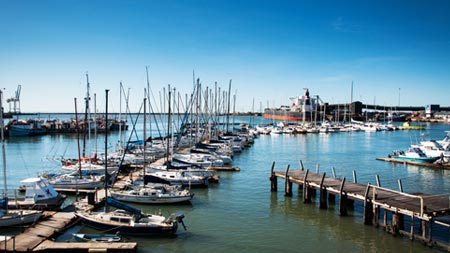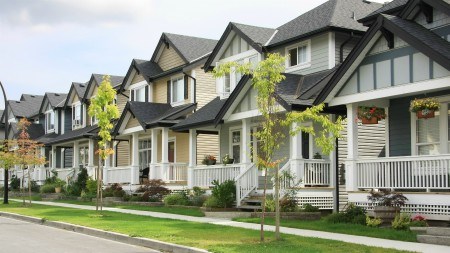The suburb of Richmond Hill in Port Elizabeth is on the path to becoming a huge urban renewal success.
Private sector real estate investment in the suburb of Richmond Hill in Port Elizabeth is rising on the back of ongoing regeneration projects, with a record 68 percent of businesses and 34 percent of home owners making improvements to their properties in 2014.
That’s according to the Mandela Bay Development Agency (MBDA)’s 2015 Economic Barometer which measures the return on urban renewal investment in the city.
The report also found that the total amount invested by businesses and home owners across urban regeneration areas in Port Elizabeth hit highs of R23.8 million and R4.3 million respectively during the same period.
“Richmond Hill is on track to become Port Elizabeth’s version of the Sea Point urban renewal success story,” says Ian Olivier, area principal of Pam Golding Properties in Port Elizabeth, adding that the upgrading of national heritage sites such as the Donkin Reserve, Trinder Square, the Athenaeum and Constitutional Hill Street, were at the heart of a sustainable economic about-turn for the area.
“In its heyday, Richmond Hill was the landing place of the 1820 Settlers, a bustling port and the town address of many affluent wool, ostrich and mohair merchants, whose homes in their various architectural styles - including late Victorian and Georgian and Art Deco, are increasingly sought-after by prospective residents as well as business owners.”
To this end, he says, the most visible examples of private sector investment in Richmond Hill include its many eateries, B&B’s and bespoke retail outlets. “Stanley Street has become one of Port Elizabeth’s most popular eat-out zones as well as the place to shop for unique décor items and gifts. And the landmark Vovo Telo Bakery and Café, which has its origins in nearby Raleigh Street, has gone on to become a successful national franchise.”
Adds Pam Golding Properties agent Sonja Tredoux: “In the area known as Central in Port Elizabeth it’s Bird Street, home to the NMMU School of Music, Art and Design, the NMMU Business School, the AFDA Film School, the Port Elizabeth High Court – which is currently under expansion, a host of legal firms and Belmont Terrace where the landmark King Edward Hotel recently re-opened its doors during the course of a major revamp.”
From a residential point of view, she adds, upper Richmond Hill and in particular Irvine, Mackay, Callington, Glen and St Phillip’s streets, are attracting buyers wanting to acquire character homes with views.
In Central buyers tend to opt for apartments in secure, well-run buildings or quaint semi-detached homes with valley views in roads such as Cuyler Crescent and Gordon Terrace.
Plans to turn nearby Rink Street into a modern work hub are also in the pipeline and SVA International (formerly Stauch Vorster Architects, and the biggest architectural firm in the Eastern Cape) will be relocating its headquarters from Walmer to Rink Street in line with this.
Historically priceless, Richmond Hill is still surprisingly affordable, says Tredoux. “Loft apartments start at under R400 000 while semi-detached houses in need of some TLC are priced from R650 000 while at the top end of the market, expect to pay upwards of R1.3m for a large, restored freestanding house that probably belonged to a wealthy farming baron in the 1800s.”
But Richmond Hill is not just attracting young first-time buyers. The trendy suburb with its many restaurants and unique little shops, proximity to the airport and beaches and wealth of architecturally historic buildings, is increasingly the destination of a range of age groups.
According to property data specialist company Lightstone, of the 1168 freehold homes (36.67 percent) and 2017 sectional title (63.33 percent) properties in the area, 40 percent belong to owners who have lived there for 11 or more years, 39 percent belong to people aged 18 – 35 years, and 38 percent are owned by middle aged people ie 36 – 49.
People from all walks of life are being drawn to the area on the back of its successful upgrading and concurrent crime fighting initiatives, says Tredoux. These include academics and retirees who prefer the character of high ceilings, Oregon pine window frames and doors, wooden floors, lead pane and stained glass windows and small unique gardens to larger, more modern homes on big stands.
Less than 3km to the airport, just over 3km to King’s Beach, and with a choice of public and private schools within a 3km radius, Richmond Hill is also gaining popularity among family buyers. Investors, too, are making their presence felt, having identified it as an area where rental income will often cover their bonds, she adds.
Pam Golding Properties agents Brenda Cadle and Adele Barnard add: “We have buyers waiting to buy entire blocks if and when they come on the market.”
Pockets in Central are still a concern, they say, but generally there is positive sentiment and the community is working together with the local authorities to fight crime. “Central is following in the footsteps of Richmond Hill, which has implemented a special rates levy to cover the cost of a dedicated neighbourhood watch. The municipality has street cleaners in the area every day, which is also making a big impact.”
Most erf sizes are less than 500sqm, with houses averaging from 120 - 230sqm in size. “Stands here are usually small so it’s not unusual to see terraced, semi-detached double storeys which are bigger than the land on which they stand,” they explain.
Most sought-after and quickest to sell are properties with garages or at least off-street parking as well as those with sea views, pet-sized gardens with braai or entertainment areas and those that have been sensitively upgraded with modern kitchens and bathrooms.




